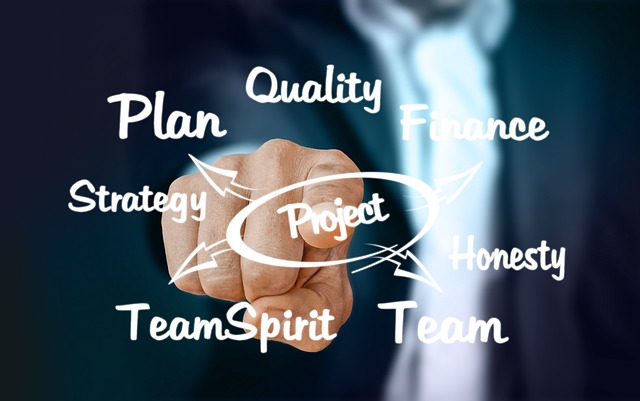The 5S Training Framework is a proven method for enhancing productivity and implementing lean management practices, inspired by Japanese manufacturing principles. Comprising five key stages—Sort, Set in Order, Shine (Clean), Standardize, and Sustain—this system transforms disorganized spaces into streamlined, efficient areas. By encouraging employees to scrutinize their work environment, 5S discards waste, establishes efficient processes, and promotes a culture of continuous improvement. Regular reviews ensure optimized workplace organization over time, contributing to both individual productivity and operational excellence through process standardization. Case studies from manufacturing, healthcare, and retail sectors show significant boosts in productivity, quality, and operational efficiency through the practical application of 5S continuous improvement techniques.
Boosting productivity is a top priority for many organizations. Among the various strategies available, the 5S Training Framework stands out as a powerful tool for creating efficient and organized workspaces. This article explores the transformative potential of 5S training, backed by lean management principles, in streamlining workflows and maximizing output. We delve into workplace organization techniques, long-term continuous improvement strategies, and process standardization to provide real-world insights on implementing this proven system.
- Understanding the 5S Training Framework for Productivity
- Lean Management Principles: Streamlining Workflows
- Workplace Organization: Maximizing Space and Efficiency
- Continuous Improvement with 5S: A Long-Term Strategy
- Process Standardization: Ensuring Consistency and Quality
- Implementing 5S in Action: Real-World Case Studies
Understanding the 5S Training Framework for Productivity

The 5S Training Framework is a powerful tool in the realm of productivity enhancement and lean management. It is a systematic approach to workplace organization, derived from Japanese manufacturing practices, with a focus on creating an efficient and safe environment. The ‘5S’ stands for five specific steps: Sort, Set in Order, Shine (Clean), Standardize, and Sustain. This method transforms chaotic spaces into organized, streamlined areas, enhancing productivity and improving workflow processes.
By implementing 5S continuous improvement, organizations can achieve process standardization, ensuring every employee works within a structured environment. It encourages employees to take ownership of their workspace, fostering a culture of order and efficiency. Sort involves eliminating unnecessary items, Set in Order arranges everything logically, Shine emphasizes cleanliness, Standardize creates consistent practices, and Sustain ensures these changes are maintained over time.
Lean Management Principles: Streamlining Workflows

Lean Management Principles, rooted in the renowned Toyota Production System, offer a powerful framework for enhancing productivity through streamlined workflows. At the heart of this approach lies the 5S training methodology—Sort, Set in Order, Shine, Standardize, and Sustain—which transforms chaotic workplaces into organized, efficient hubs of activity. By implementing 5S continuous improvement practices, organizations can achieve remarkable levels of workplace organization and process standardization.
This system encourages employees to question every aspect of their work environment and processes, eliminating waste and non-value-added activities. For instance, sorting through tasks and materials helps identify what’s truly necessary, while setting them in order creates a clear, logical workflow. Shining a light on potential issues and maintaining a clean, organized space fosters a culture of continuous improvement, where every step is standardized for consistency and efficiency.
Workplace Organization: Maximizing Space and Efficiency

Workplace Organization plays a pivotal role in enhancing productivity through maximizing space and streamlining operations. Implementing 5S training principles is a powerful approach to achieving this. 5S, an acronym for Sort, Set in Order, Shine (Clean), Standardize, and Sustain, involves systematically organizing the workspace, discarding unnecessary items, and establishing clear processes. This not only improves aesthetics but also efficiency, as employees can quickly locate tools and materials, reducing wasted time and effort.
Lean management techniques complement 5S by focusing on process standardization. By eliminating waste and streamlining workflows, organizations can create a seamless environment that encourages productivity. Regular reviews and continuous improvement, driven by the 5S framework, ensure that workplace organization remains optimized over time. This holistic approach not only enhances individual productivity but contributes to overall operational excellence.
Continuous Improvement with 5S: A Long-Term Strategy

The 5S methodology is a powerful tool for enhancing productivity and workplace organization, rooted in lean management principles. This system, which stands for Sort, Set in Order, Shine (Clean), Standardize, and Sustain, encourages continuous improvement over time. By implementing 5S training, businesses can transform their operations through process standardization. Each ‘S’ represents a distinct step in a strategic approach to workplace organization, aiming to eliminate waste and optimize workflows.
Regular 5S continuous improvement ensures that the work environment remains streamlined and efficient. It promotes a culture of discipline and order, enabling employees to focus on their tasks with clarity. As a long-term strategy, this method not only improves productivity but also fosters a sense of ownership among staff, who actively participate in maintaining an organized, standardized workspace.
Process Standardization: Ensuring Consistency and Quality

Process Standardization plays a pivotal role in enhancing productivity by ensuring consistency and quality across all operations. At the heart of this lies 5S training, a foundational concept borrowed from lean management that focuses on sorting, setting in order, shining (cleaning), standardizing, and sustaining. Implementing 5S principles facilitates an organized workplace, streamlining workflows and minimizing waste, thereby increasing efficiency.
This standardized approach to work processes empowers employees by providing clear guidelines and best practices, fostering a culture of continuous improvement. Regular reviews and adjustments through 5S continuous improvement initiatives keep the system relevant and effective. Ultimately, a well-standardized process enhances productivity by reducing errors, improving communication, and enabling teams to focus on high-value tasks.
Implementing 5S in Action: Real-World Case Studies

Implementing 5S in Action: Real-World Case Studies
Many organizations worldwide have successfully leveraged 5S training, a cornerstone of lean management, to transform their workplaces and boost productivity. This Japanese organizational method focuses on workplace organization, process standardization, and continuous improvement. In the manufacturing sector, for instance, companies like Toyota have adopted 5S as part of their production line optimization strategies. By categorizing items into keep, set in order, shine (clean), standardise, and sustain, workers create a more efficient workflow, reducing waste and enhancing overall productivity.
Beyond manufacturing, 5S continuous improvement has found applications across various industries. Healthcare facilities have used it to streamline patient care processes, while retail stores have employed 5S principles to optimize inventory management and store layouts. These case studies demonstrate that effective implementation of 5S training can lead to significant gains in productivity, quality, and overall operational efficiency, making it a valuable tool for any organization aiming to achieve leaner, more organized operations.
The 5S training framework offers a comprehensive approach to enhancing productivity by streamlining workflows and optimizing workplace organization. Integrating lean management principles ensures every process is standardized and consistently improved upon. This long-term strategy, focusing on continuous 5S implementation, has proven to deliver significant results in various industries. By adopting these practices, businesses can achieve higher efficiency, reduced waste, and an improved work environment, ultimately driving operational excellence.
